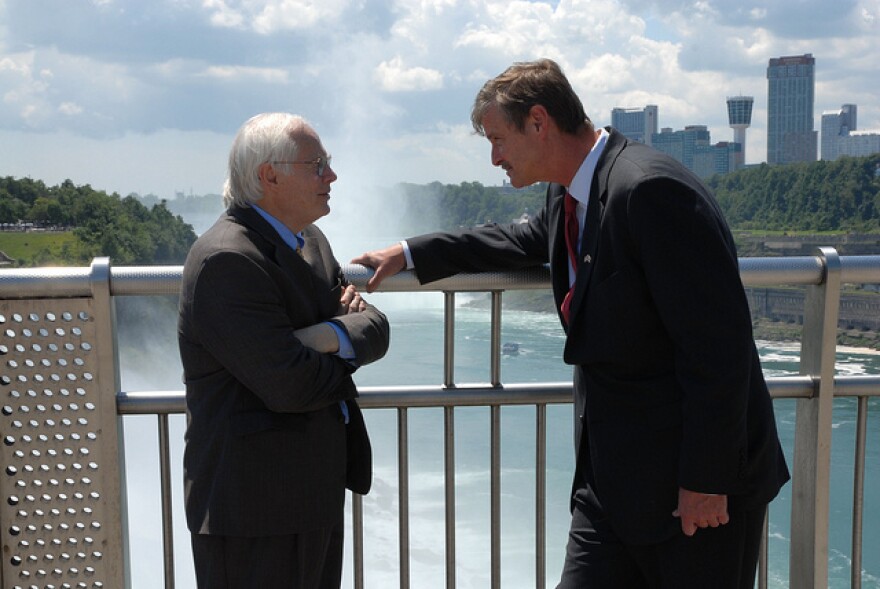Niagara Falls, New York is testing a novel approach to attract new residents. City leaders are offering to pay the student debt of 20 recent graduates in exchange for two years of residency.
According to a recent New York Times study, 94 percent of recent graduates have student debt, adding up to more than a $1 trillion nationwide.
Using $200,000 of Urban Renewal Agency funds, the city will pay up to $7,000 to each new resident in exchange for renting or buying a home in a concentrated area. City leaders have yet to determine criteria for choosing the 20 participants.
“They have to get over this mountain of college debt they’ve incurred, not by doing something stupid, like living beyond their means, but by doing what we asked them to do, as parents and grandparents, which is: get a good education,” says Mayor Paul Dyster, a second-term Democrat.
The idea is to bring vibrancy to the city’s quiet downtown that’s less than a mile from the falls. Currently, the urban core is a patchwork of empty lots, abandoned buildings and thinning neighborhoods.
“It’s a tipping point area. There’s some positive attributes in that area now. There also some things that are very worrisome,” says Dyster.
Dyster’s administration hopes to create a buzz that investors who may want to open new businesses downtown will pick up on.
“Twenty individuals of a pro-active nature moving into a concentrated neighborhood is a massive infusion of energy, imagination, talent, but also potentially, buying power,” says Dyster. “We’re hoping that they are going to become not just 20 people that live in the neighborhood. But 20 people that become advocates for the neighborhood at the same time.”
Will it work?
Evaluating the success of the program could be tricky. The burden of proof is on Dyster’s administration, who hatched the plan and convinced a majority of Urban Renewal Agency members to vote for it. Only one other area, a handful of towns in rural Kansas, is attempting a similar program that will pay graduates up to $15,000 over five years.
“You can’t just do something just to do it,” says Glenn Cholookian, a city councilman who voted against the plan.
“You bring 20 people that stay here, how about the 100 that leave? You cannot just pick a certain area and say 20 people are going to save it,” says Cholookian.
Since the 1950s, the population of Niagara Falls has fallen by half. Choolokian, a first-term Republican, is adamant that the city should spend its limited funds on the people and businesses that have stuck it out during a half-century of economic decline.
Skeptics also voice concerns that nothing binds the 20 new residents to the city long term.
“Once the students come here, they get the two years in, then they’re going to move some place else. It’s not like they have a program in place where they can become first time buyers, where they’re going to stay here and pay taxes down the road,” Cholookian says.
20 more cups of coffee
The program is the brainchild of 29-year-old Community Development Director Seth Piccirillo, who has student debt himself. The city has to get creative, he says, or else its condition will just continue to worsen.
“If the market was going to bear this type of growth, it would have done it already. So what do we do? Do we do nothing? Or do we try to stimulate the market?” Piccirillo asks rhetorically. “That’s 20 more dinners. That’s 20 more cups of coffee. That’s 20 more trips to the dry cleaners. Are we doing anything else to bring 20 people in? No.”
Companies that have considered moving to Niagara Falls have complained about the city’s lack of young people, says Piccirillo
“Employers follow talent. And we need to cluster talent together for employers for the new knowledge-based economy to take notice of us,” he says.
City leaders also fear the population of Niagara Falls will drop below 50,000 in the next census. If that happens, it will no longer be considered a city in the eyes of the government, and critical state and federal aid will disappear.
The city will begin accepting applications for the 20 spots this fall.





